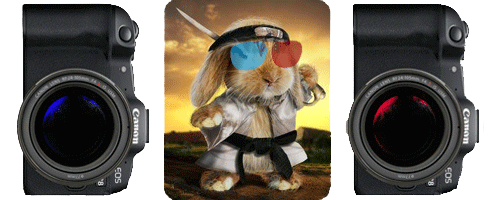
Stereoscopic Profile
As a child I grew up surrounded by real stereoscopic photographs. My father, his father and his father before him all had a passion of capturing real stereoscopic photographs on transparent film. I went on endless field trips in search of floral subjects and was either observer or assistant during many 'studio' sessions. I bore witness to my father's pursuit of his passion. He was an amazing engineer and took to making his own stereoscopic camera equipment. His passions included landscape and macro photographs of flowers, especially orchids. He participated in numerous competitions and clubs, and for a while was the folio secretary for the Australian section of the Stereoscopic Society. Over the years he collected many awards and was a well-respected stereoscopic photographer both nationally and internationally. So it wasn't that creating real stereoscopic photographs was new to me, it just wasn't something I had considered pursuing until...
On the 25th December, 2011 I took my first real digital stereoscopic photographs using a Fujifilm W3 camera I purchased from a local retailer who was clearing them out. The quality of the first couple of photographs was very poor because I was using the cameras set to its default settings. To make things worse, I was indoors without flash, I deleted those first two attempts. I then discovered how to enable the flash for the third photograph, I was satisfied enough not to delete any more photographs.
After searching online, I discovered that the camera was capable of far more refined photographs if you used the appropriate settings and I found references to applications that required you to have a 3D monitor attached to your computer which could 'align' my raw photographs. I bought my first one, an AOC e2352Phz 23" LCD Monitor (Piano Black) 3D monitor with an LED backlight. The first application I tried was called Cosima (COrrect Stereo IMages Automatically). The trial version stamped a logo "mounted with cosima" on the corrected photographs. The second application was called Stereo Photo Maker and it was free. To get it to align your photographs you needed a second 'plug-in' called 'autopano' which was an automated picture stitching application that identified shared parts in two or more photographs and could stich them together to make a single panoramic photograph. It could equally be used to correct alignment issues between two overlapping digital stereoscopic photographs. Later versions of Stereo Photo Maker did not need to use this plug-in. Over the next few months, I developed a workflow to capture, process and view my photographs. I had two ways to view my photographs, using the lenticular viewer on the back of the Fujifilm W3 camera and on my 3D computer monitor, fine for one person at a time. 3D Televisions were still being produced and I purchased an LG 32" (80cm) Full HD Smart 3D LED LCD TV so we could start viewing photographs as a group.
I recalled that my father belonged to some stereo groups so I searched online for them and came across the Sydney Stereo Camera Club website. I sent off an email, a response came back and I became a member.
In a search for ways to improve the technical quality of the photographs I was capturing, I ventured into the area of twin rigs. This became a long journey of gradual improvement (and failures) until the present time where I am now accepting that the only thing causing issues with my photographs is my technique, not my tools.